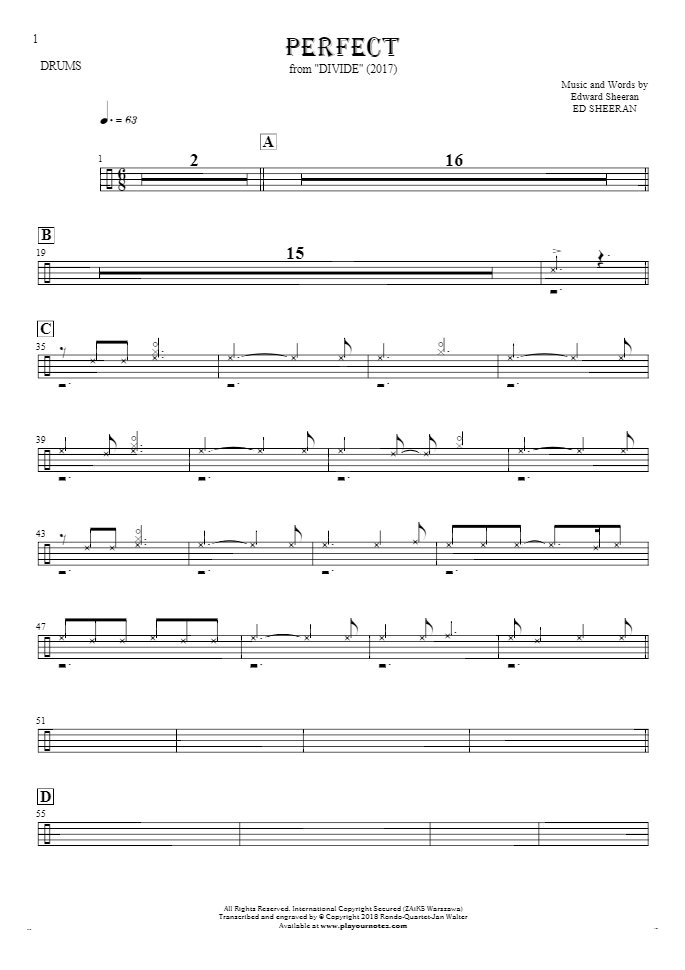
We can clean things up if we rewrite the example above by combining some of the rests. This makes reading easier and is less cluttered

This is because you can combine two 16th rests together to make an 8th rest. Usually, we will not find more than one 16th rest next to each other. Here are some examples of using the 16th rest: The 16th rest can take the place of any 16th note, with the only difference being that you don’t play the rest. Visually, it is similar to the 8th rest, but you add an extra node signaling that it is a 16th rest. The quarter note has the quarter rest, the 8th note has the 8th rest, and now the 16th note has the Sixteenth Rest. If you had the first 3 notes, they would be counted as follow: “1e+_, 2e+_, 3e+_, 4e+_”Īnd finally, the last 3 notes would be counted: “_e+a, _e+a, _e+a, _e+a” Keeping with that same pattern, you can also have just three notes in a row: If you only had the last two 16th notes, you would count: “_ _+a,_ _+a,_ _+a,_ _+a”Īnd, if you only had the 2nd and 3rd notes, counting would go: “_e+_, _e+_, _e+_, _e+_” If you only had the first two16th notes, if would be counted: “1e_ _, 2e_ _, 3e_ _, 4e_ _” Music is built around creating interesting rhythms, which means that we might see different groups of 16th notes. Quite often, you won’t see all four 16th notes in a row. You pronounce “e” like you would the letter, and “a” like “ah” (As in ah-ha!) Counting Smaller Groups of 16th Notes With 16th notes, we keep both the quarter note and 8th note counting, but add 2 syllables in between: “e”, and “a”. Eighth notes keep those beats, and add the word “and” in between (Represented with a “+” sign): 1+, 2+, 3+, 4+. Quarter notes are counted on the beat: 1, 2, 3, 4. Since the 16th Note separates a quarter note into 4 different sections, we have to add a couple syllables. To tell the difference between 8th notes and 16th notes, look at how they are beamed together.ġ6th notes are not always put together in groups of two or four, but we will discuss different groupings in the next post.

This is because a single 8th note only has one flag instead of two. If you group four eighth notes together, you only get one beam. This makes sense because a 16th note on its own has two flags. If you look at the above picture, you can see that four 16th notes grouped together are connected by two beams. Usually, we see them put together in groups like this: In western music, It isn’t very common to see a single 16th note by itself.
#Drum tab notes how to#
How to Tell the Difference Between 8th Notes and 16th Notes If a quarter note takes up one beat, then you can split that quarter note into two 8th notes, or four 16th notes. Introducing the sixteenth note! As you probably noticed, it looks similar to a quarter note or an eighth note with an extra flag on it.Ī 16th note is the value of one quarter note split into four. Don’t be afraid, it really isn’t that hard once you understand what everything looks like: Next, I will be moving onto one of the larger topics, the sixteenth note (16th note).

In this section I will be expanding upon what we’ve learned already.
#Drum tab notes series#
Hey drummers! Welcome back to my series on learning to read drum sheet music! This is part 3 in the series, so if you’re a beginner and stumbled upon this page out of order, click the links below to start at the beginning:


 0 kommentar(er)
0 kommentar(er)
